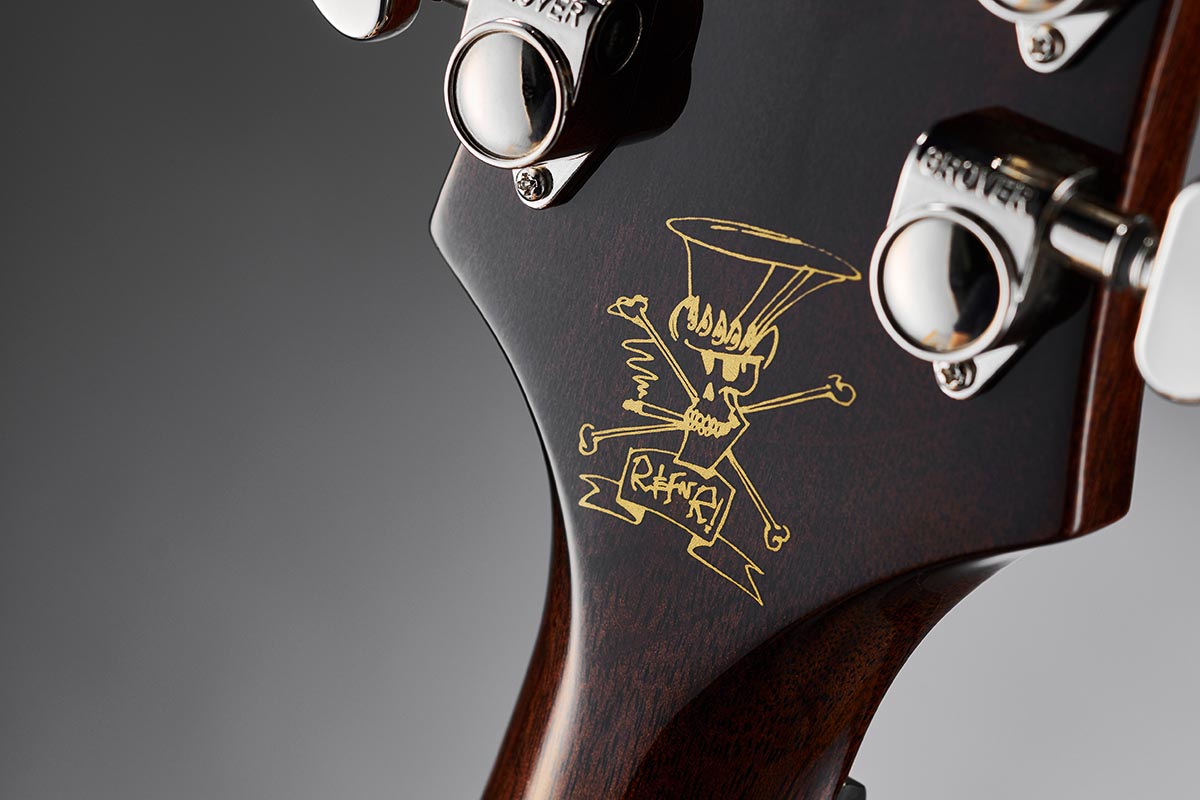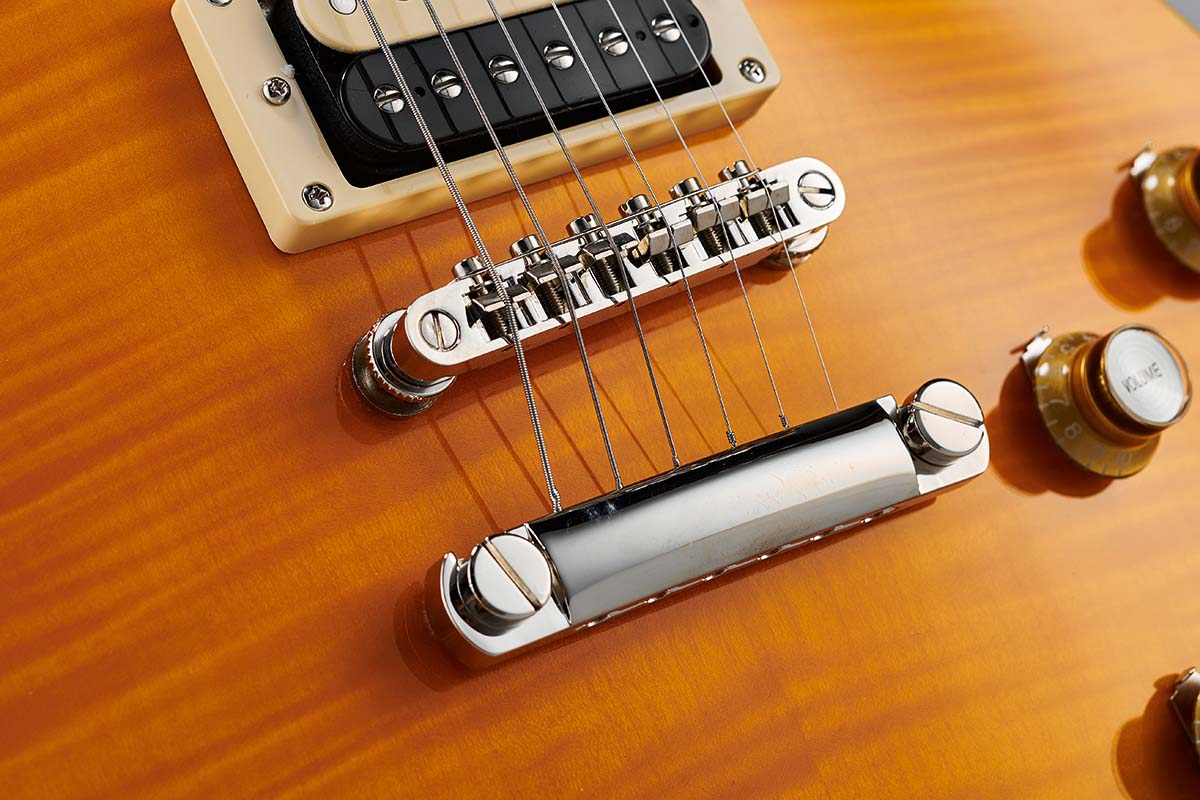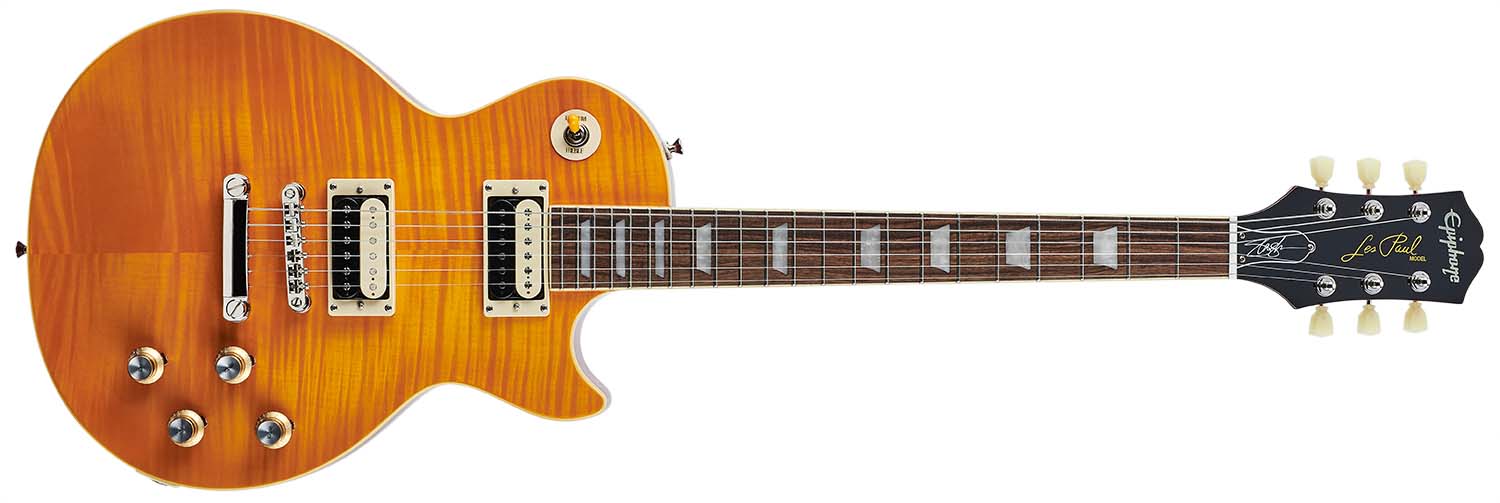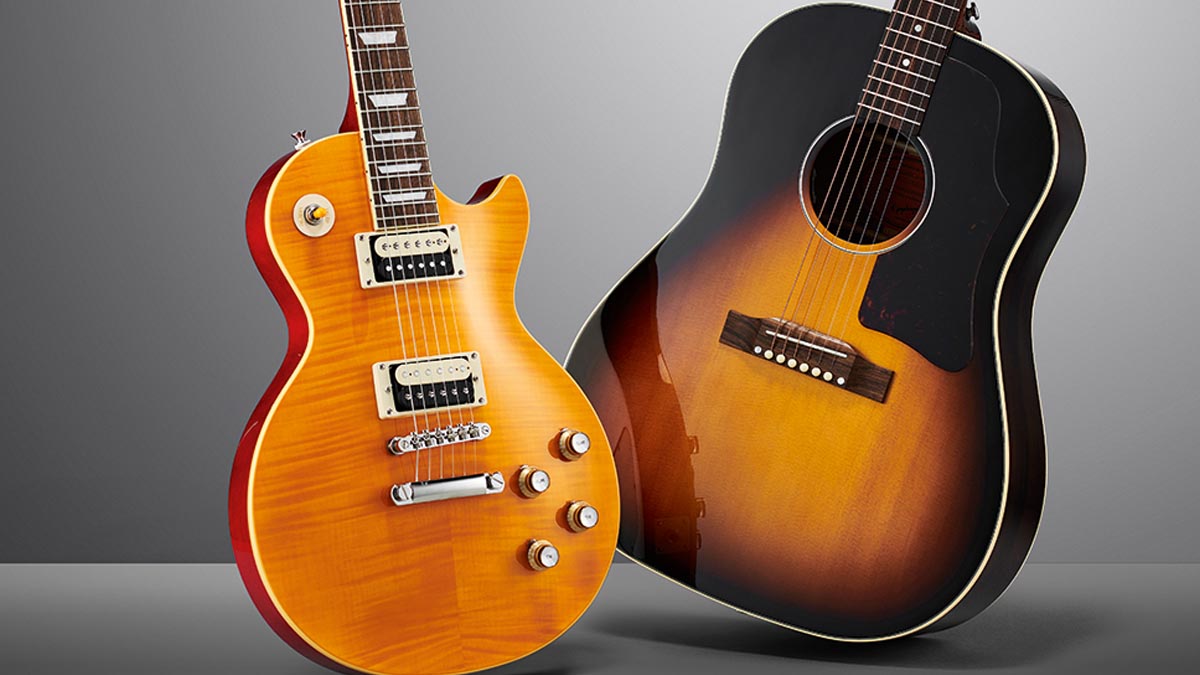Guitar World Verdict
Gibson may have had some turbulent times in recent years, but for Epiphone, the first fruits of Slash’s partnership with the brand are a great balance of design, build, value and quality control. Forget your preconceptions and enjoy some fine guitars!
Pros
- +
J-45 has all solid build and quality electronics.
- +
Classic styling makes them suitable for non-GNR fans.
- +
Both hit all the right tones.
- +
Hardcase included.
Cons
- -
J-45's preamp controls can be fiddly to access mid-song.
You can trust Guitar World
Brian and the Red Special, Jimi and his Strat... some pairings are just meant to be, and while Slash has strayed and played other guitars at various points, he’s never very far from his Les Paul. In fact, not many things sum-up rock ’n’ roll like the image of the man himself sporting a top hat, Malborough and a low-slung LP.
In 2020, Gibson appointed Slash as its first ever ‘Brand Ambassador’, a job title which presumably involves some of his already-daily activities: being Slash, playing Gibsons and inspiring generations to play the guitar.
As well as this, there’s the obvious scope for helping to create some great guitars across the company’s product lines. Which brings us to our review of the first Epiphone release since Slash came onboard in his new capacity: the Epiphone Slash Collection.

Appetite for construction
Essentially comprising two base models – the Slash Les Paul Standard and Slash J-45 electro-acoustic – the collection is actually a seven-strong line-up. Five finish options are offered on the Les Pauls, and two on the J-45 with the finishes being the only spec changes between models of the same type.
Now, as you might already be aware, this isn’t the first time Slash has had a signature Les Paul with Epiphone. In 2010, Epiphone released the Slash AFD Les Paul, which featured the same Slash Custom neck profile (patterned from Slash’s original).
There are a few spec differences here, though – the previous AFD guitar included Slash’s signature Seymour Duncans and a rosewood fingerboard, while today’s model features Gibson Custom Burstbuckers – the same pickups used in his signature USA Gibsons – and Indian laurel ’board.
Elsewhere, you get a mahogany body capped with a AAA flame maple top, mahogany neck carved to Slash’s custom profile, Graph Tech nut, block pearloid inlays, top hat (what else!) control knobs, CTS pots and Orange Drop capacitors. Meanwhile, the J-45 is the first acoustic that Slash has put his name to, and on paper it’s an all-rounder.
All the latest guitar news, interviews, lessons, reviews, deals and more, direct to your inbox!

Kicking off with that iconic J-45 body shape, it’s designed to give you plenty of punch when strumming chords, while also working for fingerpicking and single-note playing. Slash’s take on the J-45 is an all-solid construction, with a Sitka spruce top and mahogany back and sides aiming straight down the middle when it comes to the sort of tones we can expect.
But, stepping away from tradition is that same Slash Custom C-shaped neck profile which should mean that – combined with the 24.75” scale length – jumping between an electric and this strummer should feel like strapping on a comfortable pair of old boots.
There’s electronics onboard, too, with the inclusion of an LR Baggs VTC under-saddle pickup and preamp system. Being Slash signature models, both the Les Paul and J-45 have Slash’s ‘Skully’ logo and signatures printed on the back of the headstock.

Welcome to the Jangle
If you’re the type of player who has reservations about ‘affordable’ guitars, we’d suggest leaving the snobbery at the door. For a start, neither of these guitars are exactly cheap, and it’s backed up by the presentation.
The hardcases are of the gig-ready, pink fluff-lined and shaped variety that definitely mean you won’t need to upgrade in a hurry. Both guitars are striking as we open the cases, with the Les Paul’s orange tint and ‘flat’ burst aping the look of a faded ’59.

There’s nothing worse than a beautifully flamed finish with slight colour blemishes under the lacquer, and we’re pleased to say that it’s uniform across the front, while the back is finished in a sweet cherry red.
The J-45 matches it in a different way – its furniture-like gloss and rich tobacco burst is immaculate and feels expensive straight away. If you couldn’t see the headstocks, you’d be forgiven for thinking you were looking at a USA Gibson.
The Les Paul is exactly what you might expect: the medium weight body feels meaty, but sits comfortably on our lap and strap. The neck profile, however, definitely gives this guitar some of its personality.
While the 12-inch fingerboard radius is standard, the carve feels flatter and slightly wider than some more recent C-shapes to our hands. Tonally, we’re looking to be fulfilled, and if the exclusion of Slash’s signature pickups has you worried then don’t let it.

The neck pickup rings like a bell with the tone rolled back for that famous intro, outputting all the nuanced interaction and harmonics between the strings as we go. Pushing the tone back up to full with some overdrive gives us a near perfect bluesy-rock lead sound.
Perhaps surprisingly, the neck pickup only starts wooling up a bit under some pretty high gain settings, remaining tight and clear until then – sort of like a bridge pickup with more bass response. Kicking in that bridge humbucker is equally rewarding, particularly when overdriven.
The quality continues once you pick up the acoustic, too, with the J-45 packing a solid low-end punch that’s well out of the way of muddy frequencies, but also has a high-end sparkle to it. Our first impressions strumming chords is that it has a very studio-like, pre-EQ’d quality to it.

There’s projection, too, with bigger strums punching their way through with a strong percussive edge. It’s impressive considering the average size of the body. It’s no coincidence the J-45 has been a perfect all-rounder for so many decades.
Electric players sometimes find swapping to acoustic to be slightly jarring, but we’re pleased to say that this is a comfortable ride. The neck profile isn’t noticeable, until you remind yourself, which is probably about all we can ask for here, and our review model came with a very forgiving low action.
Plugged in, that tone transfers nicely. The controls are mounted inside the soundhole which helps to keep everything looking neat, but can also be Marmite to those wanting to make changes mid-song without ham-fistedly muting the strings while doing so. But that’s a small gripe, especially as this mounting position is becoming a standard from many brands.

Use your conclusion
Signature guitars potentially present a slightly different proposition to non-squiggle models. But it’s a double-edged sword. Go too specific and you risk having a one-trick pony with niche appeal. Too broad and you lose the essence of the artist.
The great news with a player like Slash is that his tones and tastes strike right at the heart of rock and its surrounding genres. The result in this case is some hugely playable guitars that you really aren’t going to go wrong with within the wide sweeping margins of rock ’n’ roll.

Specs
Epiphone Slash Les Paul Standard

- BODY: Mahogany with AAA flame maple top
- NECK: Mahogany
- SCALE: 24.75”
- FINGERBOARD: Indian laurel
- FRETS: 22
- PICKUPS: Gibson Custom Burstbuckers
- CONTROLS: 2x volume, 2x tone, three-way toggle
- HARDWARE: Chrome
- LEFT-HANDED: No
- FINISH: Appetite Burst (pictured), November Burst, Vermillion Burst, Anaconda Burst, Victoria (goldtop)
Epiphone Slash J-45

- BODY: Mahogany back and sides/Sitka spruce top (all solid)
- NECK: Mahogany
- SCALE: 24.75”
- FINGERBOARD: Indian laurel
- FRETS: 20
- ELECTRONICS: LR Baggs VTC pickup/preamp
- HARDWARE: Chrome
- LEFT-HANDED: No
- FINISH: November Burst (pictured), Vermillion Burst
- CONTACT: Epiphone

Stuart has been working for guitar publications since 2008, beginning his career as Reviews Editor for Total Guitar before becoming Editor for six years. During this time, he and the team brought the magazine into the modern age with digital editions, a Youtube channel and the Apple chart-bothering Total Guitar Podcast. Stuart has also served as a freelance writer for Guitar World, Guitarist and MusicRadar reviewing hundreds of products spanning everything from acoustic guitars to valve amps, modelers and plugins. When not spouting his opinions on the best new gear, Stuart has been reminded on many occasions that the 'never meet your heroes' rule is entirely wrong, clocking-up interviews with the likes of Eddie Van Halen, Foo Fighters, Green Day and many, many more. If he's not playing the guitar, you'll likely find Stuart behind the kit playing Valerie to newlyweds.

